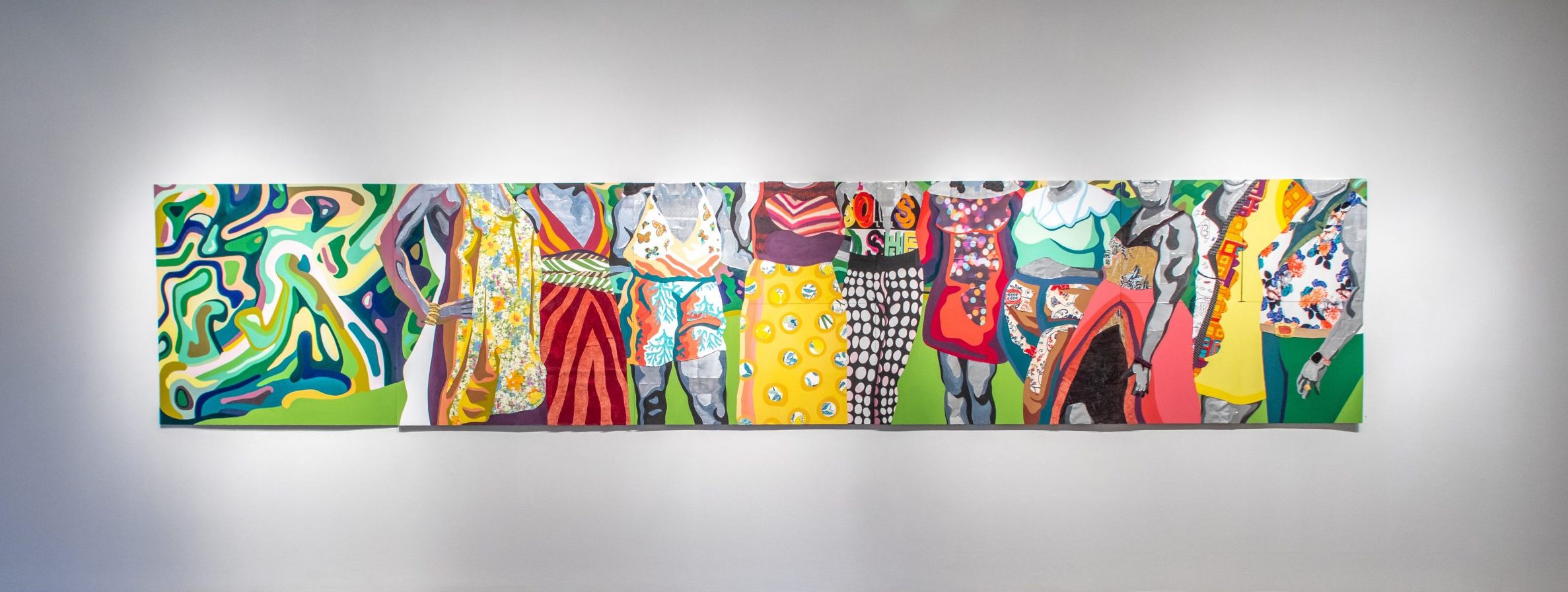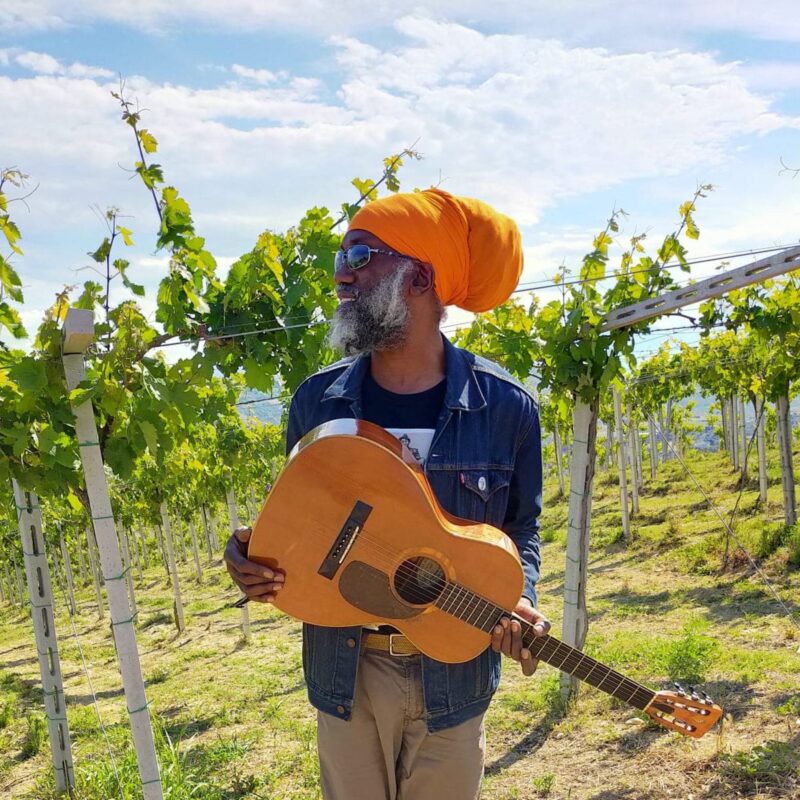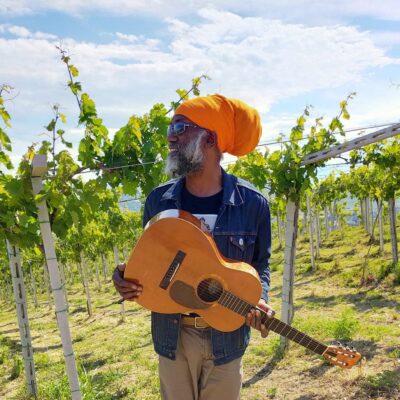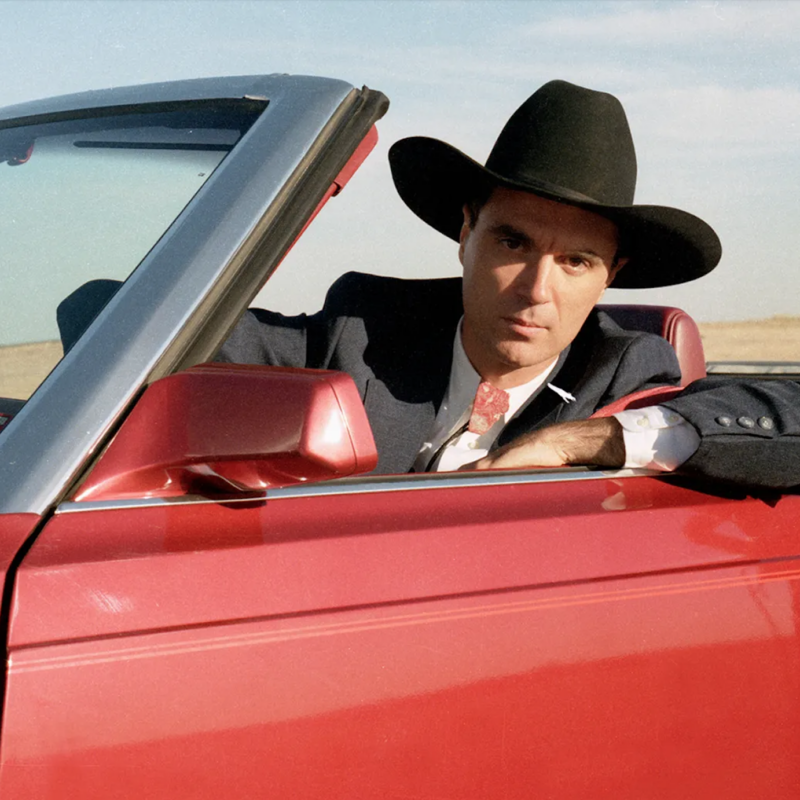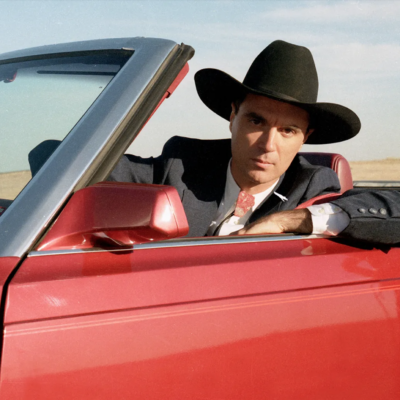By Luke Williams
Despite the chilly February evening, Second Street Gallery was filled with warm energy for the opening of “Stuart Robertson: A Suh Wi Dweet.” The exhibition offers a never-before-seen collection of portraits by Robertson, a Jamaican artist. The patois title translates roughly to “This is How We Do It,” foregrounding Robertson’s love of music, which can be seen—and heard—throughout the show. Created between 2021 and 2022, the vibrant paintings blend figurative and abstract elements to capture intimate moments of Black life.
The artist’s mixed-media paintings render friends and family in a luminous medley of metal, domestic debris, and textiles. Effectively, Black skin is made to shine like bling, emphasizing Robertson’s dedication to a Jamaican and Afro-diasporic dance hall aesthetic. We are prompted to imagine the futuristic possibilities of metallic skin, and to marvel at the technique used to harness upcycled debris into luminous shapes and textures. By reflecting, refracting, and warping the light, these paintings challenge viewers to engage with the importance of the surface and the power of shine.
While Robertson is intentional about the formal and theoretical questions his work proposes, he also values the power of representation. “It’s amazing to receive comments from people who feel uplifted by the work,” he says. “It’s amazing to see the psychological, emotional impact of putting people into things that are valuable and prominent.”
In his work, Robertson celebrates some of the Black folks in Charlottesville who hospitably welcomed him into their community for his first solo exhibition. In “To Derrick, Power Link link Power Figure (2022)” Robertson uses mixed media to pay homage to Charlottesville-based photographer Derrick Waller in a dazzling array of vibrant paints and cool metallic surfaces. The portrait frames a portion of Waller’s face, forming a contemplative moment between artist and subject. Similarly, “Pree Bee an’ di young G! One hand cyah clap…(2022)” is both an object of celebration and a signal for collaboration to illuminate artist Marley Nichelle, whose exhibition “Ghana to Gullah” catalogs a travel narrative of expert photographs in Second Street’s Dové Gallery. Both pieces topically and materially reflect Charlottesville’s Black arts community, itself full of intricate ability and outstanding energy.
SSG Executive Director and Chief Curator Kristen Chiacchia, who worked closely with Robertson to curate his first solo exhibition, sees great promise in the artist. “I really see his work taking off,” she says. “It’s not only the quality of the work and the great aesthetics…it’s his ethics and his personality. He is true to himself, and when the work is so personal it comes through as an artist.”
“A Suh Wi Dweet” is, above all else, personal. The show softly reflects the care Robertson holds for each of the subjects in his portraits, and it comes through in how thoughtfully he approaches the double-edged sword of Black representation.
Just as the skin of Robertson’s figures glitters like jewelry, it also seeks to protect the wearer from violence. We are invited to admire the beauty of the shine, but we are also prompted to ask why armor is necessary when showing Black people.
It is impossible to see Black portraiture and not think of the endless cycle of Black people killed by the police. (While writing this piece, Amir Locke, a 22-year-old Black man killed by the police in Minneapolis, is in the headlines.) Their portraits circulate on social media, T-shirts, and murals, creating an interminable association between anti-Black violence and Black portraiture. So while it can be exciting to see more Black folks on the walls in a gallery, the specter of violence looms in the background.
Robertson responds to the often ambivalent position of being seen while being Black by shifting the focus away from the faces of his portraits. He says, “People would be excited and say, ‘Oh, that could be my aunt. That could be my sister. Oh! That’s my mom’ all the while knowing it’s not them.” In this case, the refrain of mistaken identity is meant to celebrate the position of Black people on the gallery’s walls. Yet, nearly 10 years ago to the day, the same sentiment was expressed by President Barack Obama about Trayvon Martin: If I had a son, Obama said, he would look like Trayvon Martin. It is an acknowledgment that Black people, no matter their age, gender, status, or ability, need to be protected from violence.
Seeing these portraits of Black community created within an ethic of care, we are challenged to hold two important values simultaneously: celebration and protection. In “A Suh Wi Dweet,” we are invited to imagine such a community formed in intimate moments like gardening or getting a haircut, but sustained by a cultural resilience forged like metal. When asked how it’s possible to hold two such difficult realities simultaneously, Robertson laughs quietly and shakes his head, smiling as if to reflect the shine of his portraits. A suh wi dweet.
